Winning teams usually make a lot of good decisions before or during the course of a successful season, but some decisions have a greater effect on their year than others. Each team below is winning this season for a lot of reasons, but this piece focuses on a single decision or a group of related decisions that have put the clubs in playoff position and shaped the way their seasons have gone.
American League
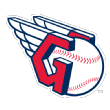 Cleveland Indians: Timing the Trevor Bauer market
Cleveland Indians: Timing the Trevor Bauer market
It's possible Cleveland flew too close to the sun this season as it tried to contend without making any meaningful additions to the team, but with rumors of a Bauer trade going all offseason, the team was wise to keep him. Bauer and Shane Bieber are the only Cleveland pitchers with more than 110 innings this season and Bauer's 24 starts and 156⅔ innings kept the team afloat and helped get them back in the race after a tough start. Then, with Cleveland's obvious outfield issues, the team moved Bauer for Yasiel Puig and Franmil Reyes, getting Puig for the stretch run and Reyes as a potential long-term contributor. Puig and Reyes haven't really gotten things going for Cleveland, but it was a wise decision to address the club's major holes in the lineup with Bauer after getting two-thirds of a season of needed quality innings.
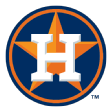 Houston Astros: Bringing up Yordan Alvarez
Houston Astros: Bringing up Yordan Alvarez
Houston didn't need Alvarez to win the AL West, but he might be the difference in getting home-field advantage throughout the playoffs. At the time of his call-up in early June, George Springer, Jose Altuve and Carlos Correa were all on the disabled list. The historically good offense was in danger of being just good, and Alvarez fixed that issue immediately. Since his call-up, he has put up a batting average over .300, an OBP over .400 and a slugging percentage that is closer to .700 than .600. All told, his 181 wRC+ is the best mark in baseball since June 9 when he made his debut. Hindsight makes it look like an easy call given his huge minor league numbers, but the team was missing outfielders and infielders and they called up a hitter instead.
 Minnesota Twins: Trying the same strategy that failed in 2018
Minnesota Twins: Trying the same strategy that failed in 2018
In 2018, the Twins made a series of low-risk moves and signings to supplement their young core, and it failed miserably. The team brought in Jake Odorizzi, Lance Lynn, Logan Morrison and Addison Reed to help Brian Dozier, Eduardo Escobar, Byron Buxton, Miguel Sano, Jorge Polanco, Max Kepler and Jose Berrios. The signings and trades didn't work out as Buxton and Sano had lost seasons, Polanco was suspended, Kepler was close to average, and Dozier and Escobar were traded. This year, they brought in Nelson Cruz, Martin Perez, Marwin Gonzalez and Jonathan Schoop with Michael Pineda finally ready to return. Different names, but similar players with similar risks. This year, it has paid off with the new acquisitions contributing and the younger players taking steps forward as the club looks to lock up the division next week.
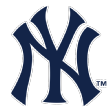 New York Yankees: Trusting their internal options
New York Yankees: Trusting their internal options
When big stars go down, there's a temptation to go outside the organization to fill holes. For many clubs, that might be a good idea, but the Yankees relied on their work in the offseason and over the past year to fill in most of the gaps. With Giancarlo Stanton, Aaron Judge, Aaron Hicks, Didi Gregorius and Miguel Andujar all out for extended periods of time, the team relied on the depth already in the organization. Luke Voit, Gio Urshela and Mike Tauchman generated headlines as out-of-nowhere successes, but the versatility of free-agent signing DJ LeMahieu has been invaluable, and bringing back Brett Gardner also has proved to be a wise move. The team went outside for help in the form of Cameron Maybin and Edwin Encarnacion as well, but it was players already in the organization when the season started who have made the biggest impact.
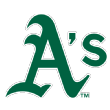 Oakland Athletics: Making Liam Hendriks the closer
Oakland Athletics: Making Liam Hendriks the closer
When Blake Treinen hit the injured list in late June, he wasn't pitching the way he did in 2018, but he wasn't awful, either. With an ERA and FIP around 4.00 and 16 saves in 18 tries, chalking up his struggles to a small sample size and returning him to his role as closer might have been defensible. Instead, the team went with the best pitcher they had in Liam Hendriks and the 30-year-old right-hander has been the best reliever in the game this season with a 2.00 FIP and 1.68 ERA. He has amassed more than 80 innings with his 3.4 fWAR ranking 12th in the American League among all pitchers, including starters.
 Tampa Bay Rays: Casting a wide net at the trade deadline
Tampa Bay Rays: Casting a wide net at the trade deadline
Tampa Bay didn't land any big names at the trade deadline, but by Aug. 1, the team had added Eric Sogard, Jesus Aguilar, Trevor Richards and Nick Anderson with Peter Fairbanks an August addition. Sogard has filled a hole at second base, with Brandon Lowe out because of injury, and he has provided an average bat with good baserunning and solid defense. Aguilar has provided an average righty bat at first base and designated hitter to help solve some of the Rays' platoon issues. Richards has provided solid innings out of the pen and in the rotation, and Anderson has been the best reliever in baseball since joining the Rays. The team didn't make one impact move, but in a race as tight as the one for the AL wild-card spots, those moves on the margins could make the difference.
National League
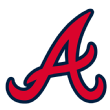 Atlanta Braves: Shaking up the rotation
Atlanta Braves: Shaking up the rotation
Mike Foltynewicz entered 2019 with a firm grip on a rotation slot after a very good 2018 campaign, but after a disastrous start on June 22, the team sent him to the minors. At that same time, Dallas Keuchel made his debut with the Braves after signing with the club in early June. The left-hander showed a little bit rust in his first few starts, but since the beginning of July, he has put up a 4.03 FIP and 3.14 ERA. Other teams probably needed Keuchel more than the Braves, but the team was behind the Phillies in the standings and opted to go get the best pitcher available without giving up any prospects. To help matters further, the team opted to move on from Kevin Gausman, who was a huge acquisition a year ago, and Foltynewicz effectively stepped into Gausman's spot.
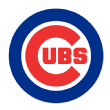 Chicago Cubs: Trading for Nicholas Castellanos
Chicago Cubs: Trading for Nicholas Castellanos
A lot has gone wrong and continues to go wrong for the Cubs, but trading for Castellanos just as he was getting hot has been a huge boon to the offense as others have struggled because of injuries and fatigue. Since the trade deadline, only Nolan Arenado and Eugenio Suarez have more than Castellanos' 15 NL homers. The Cubs were probably hoping that signing Craig Kimbrel would be the club's best decision this year, but the closer hasn't delivered the stability Chicago needed. Sticking with the struggling Yu Darvish in the rotation has been a plus for the team, but the Cubs didn't have any other viable options except to let him figure things out. In terms of decisions, bringing in Castellanos has had a big impact on the field and helped keep the Cubs in the playoff race as they lost hold of the NL Central lead.
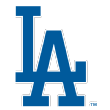 Los Angeles Dodgers: Counting on their prospects
Los Angeles Dodgers: Counting on their prospects
The Dodgers opted to let Yasmani Grandal go at the end of last season with Russell Martin and Austin Barnes set to split the catching duties. Now, catching prospect Will Smith is the team's go-to behind the plate and he has hit 13 homers in under 50 games since his call-up. When the team was having some rotation trouble in August, it called up Dustin May, who made four starts and could now be a weapon in the bullpen in October. Even this month, the club has made a change at second base, bringing up top prospect Gavin Lux, who has kept on hitting since he joined the team. The team is where it is because of its stars, but it might get over the World Series hump with rookies who were not on the Opening Day roster.
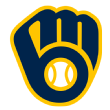 Milwaukee Brewers: Choosing Keston Hiura over Travis Shaw
Milwaukee Brewers: Choosing Keston Hiura over Travis Shaw
In May, with Shaw struggling, he went on the injured list to give his wrist a break. Hiura hit well in Shaw's absence with a .281/.333/.531 line, but the team brought back Shaw in early June to give him another chance. Shaw continued to struggle, and the team again called upon Hiura to take his place in the lineup with Mike Moustakas moving to his natural position at third base. Hiura proceeded to hit .307/.381/.584 over the next two months before hitting the injured list because of an ankle injury. Giving Shaw one more chance was probably the right move in early June, but the team acted quickly enough to make sure the team took advantage of Hiura's bat this season. With Christian Yelich now out, Hiura's return from injury takes on increased importance these last few weeks.
 St. Louis Cardinals: Continuing to prioritize defense
St. Louis Cardinals: Continuing to prioritize defense
As the Cardinals were mired in a teamwide offensive slump in May and June, Mike Shildt kept trotting out the same defense-minded lineup with Kolten Wong -- who slashed .221/.280/.320 in May and June -- and with Harrison Bader still manning center despite all of his struggles at the plate. Eventually, Bader received a demotion but missed only three weeks and was immediately rewarded with his starting job. Even recently, the more defense-minded Tommy Edman has been starting over Matt Carpenter at third base. Previous Cardinals seasons have been marked by small slumps leading to the removal of defense-first players in the lineup. The Cardinals stuck with their defense this season, and it's a big reason why their 3.80 ERA is in the top five in baseball and behind only the Dodgers in the NL.
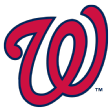 Washington Nationals: Staying the course
Washington Nationals: Staying the course
On May 23, the Nationals were 19-31 and their season looked pretty close to over. Rumors began to swirl about pending free agent Anthony Rendon. There was even speculation about Max Scherzer being moved to another team. Trade talk was premature as the Nationals went 52-26 over the next three months, making them favorites for an NL wild-card spot. The team struggled with Trea Turner and Rendon missing time early on, but their return to health and good play along with the team's incredible rotation -- Scherzer, Stephen Strasburg and Patrick Corbin are all in the top five of NL fWAR -- the team went on a run equal to its talent level. The Nationals didn't panic or give away the season early on, and now they are likely to make the playoffs with the roster they assembled in the offseason.
